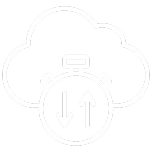



%201.svg)



.svg)




%201.svg)




.png)
.png)
.png)
.png)
.png)
.png)
.png)
.png)
Every global enterprise today runs on a complex web of systems—ERP platforms, HR suites, time tracking tools, benefits portals, and payroll engines. While SAP continues to dominate as a foundational pillar for many of these organizations, the truth remains
These systems don’t always talk to each other well.

Inconsistent data across HR, payroll, and benefits
%201.svg)
Manual adjustments that create compliance risks

Delayed deductions and reconciliation chaos
.svg)
Missed opportunities for automation and digital maturity
Nowhere is this fragmentation more visible than in organizations running SAP HCM or ECC as their payroll engine, while integrating with third-party providers like Fidelity, Alight, Kronos, Equifax, or SuccessFactors.
When performance, control, and compliance matter most, Point-to-Point Integration offers a better way.
When performance, control, and compliance matter most, Point-to-Point Integration offers a better way.
Our integration includes comprehensive tracing and logging capabilities for faster troubleshooting.
We ensure to build with security first approach. Without any risk of data breach while date is in transit.
Our optimization of SAP payroll data extraction performance by combining multithreading and parallel processing
We offer faster and Reliable parallel processing using Integrity Proprietary framework PXT
We don’t just sync systems — we help enterprise payroll teams future-proof their architecture. Our approach blends SAP-native logic with flexible design, so you can swap vendors, add new rules, or migrate to cloud HR without breaking payroll alignment.

Improve data accuracy

Reduce latency
%201.png)
Align payroll inputs to payroll cycles

Control every transformation and exception
SAP ecosystems—especially those running SAP ECC or SAP HCM Payroll—are built for precision. But as soon as you involve third-party systems like Fidelity, Kronos, or Alight, the complexity begins to rise.
Traditional integration methods, particularly those driven by middleware, add abstraction and latency. For payroll and HR-critical operations, this often translates into:

The answer?
Our SAP-native Point-to-Point Integrations, built using ABAP, Integrity proprietary integration framework, and secure file exchanges, aligned with payroll calendars and internal SAP configurations.
At its core, point-to-point integration is the direct, tightly coupled connection between SAP and a third-party system, bypassing generic middleware tools. This method:
1. Reduces latency
2. Improves customization
3. Simplifies error handling
4. Aligns closely with payroll and compliance needs
Rather than sending data into a black box middleware, you're in full control—writing ABAP logic that knows exactly which InfoType, SubType, or WageType to manipulate




























Automated 401(k) data exchange between SAP HCM and Fidelity, with accuracy.
Automating Time Capture and Payroll Processing in SAP HCM
Automating Master Data Replication via BIB Framework
Automating Employment Verification and Document Delivery